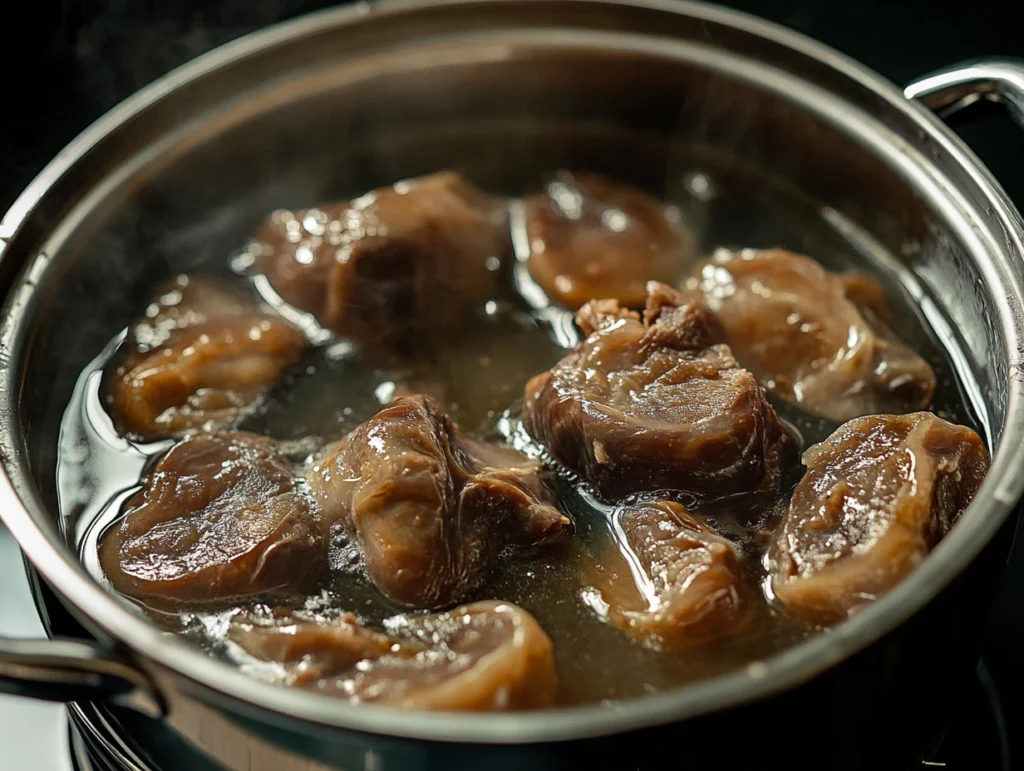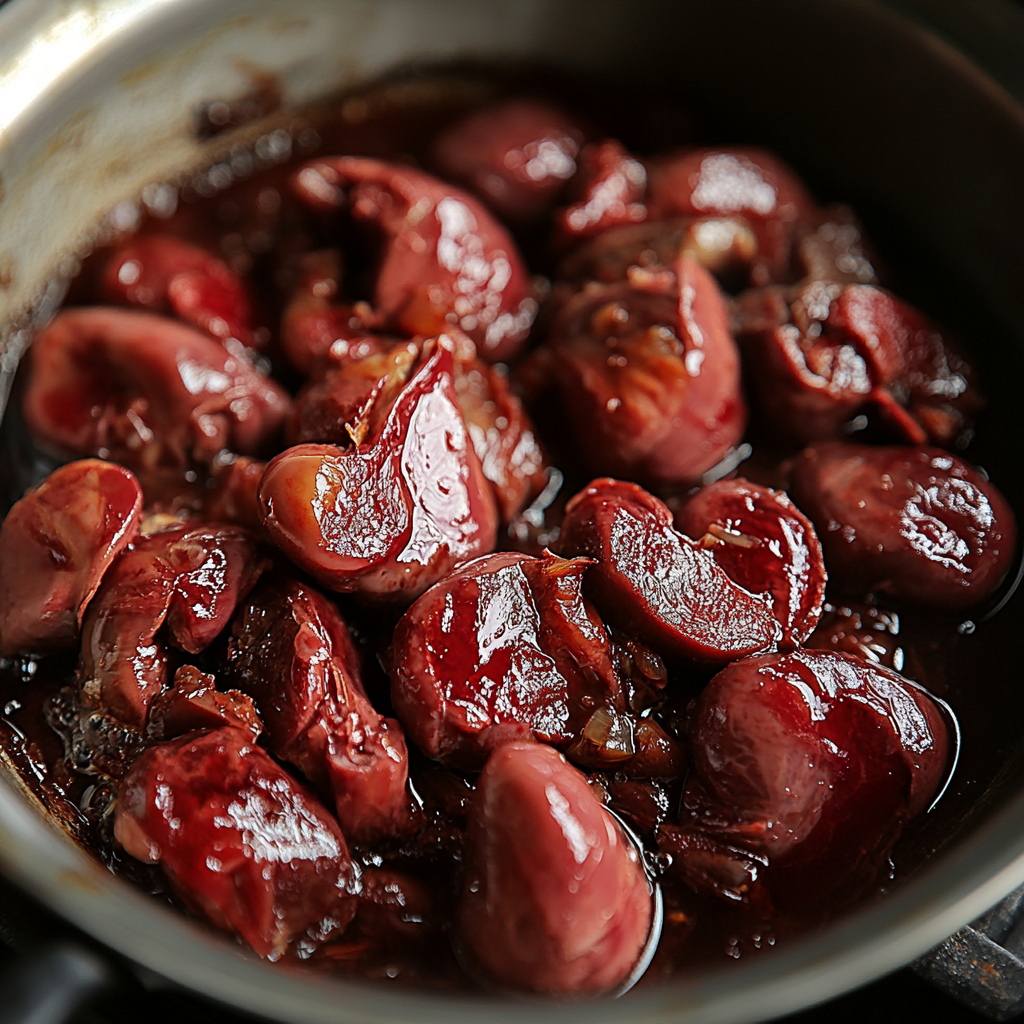Cooking with beef kidneys is an art that requires a little extra preparation. A common question among cooks is, “Do I need to soak beef kidneys before cooking?” The answer is yes, and for good reasons. Soaking is a simple step that can transform the flavor, texture, and overall quality of beef kidneys.
This article will address the common query, “Do I need to soak beef kidneys before cooking?” and explore why soaking is essential. By the end, you’ll feel confident preparing tender, delicious beef kidneys with minimal effort.
What Are Beef Kidneys?
Before diving into “Do I need to soak beef kidneys before cooking?” let’s understand the ingredient. Beef kidneys are organ meats from cows that serve as part of their filtration system. These organs are highly nutritious, packed with protein, vitamins, and minerals such as iron and vitamin B12. However, their strong flavor and aroma require careful preparation.
Culinary Importance of Beef Kidneys
Known for their robust, earthy flavor, beef kidneys are a popular ingredient in traditional dishes such as steak and kidney pie in British cuisine and kidney stews in French and Spanish gastronomy. However, their distinct taste and smell can be overwhelming for some, which is why proper preparation, including soaking, is crucial.
Why Should You Soak Beef Kidneys?
It’s common to ask, “Do I need to soak beef kidneys before cooking?” The answer is clear: soaking offers multiple benefits that improve both the flavor and texture of the kidneys. Here’s why:

For more insights into why soaking and pre-treatment of organ meats matter, you might find this beef kidney recipe French rognon useful.
- Odor Reduction: Soaking helps reduce the strong ammonia-like smell often associated with beef kidneys.
- Improves Flavor: It removes bitterness and metallic notes, allowing the rich, savory flavor to shine.
- Softens Texture: Soaking tenderizes the tissue, making the kidneys easier to cook and more enjoyable to eat.
The next time someone asks, “Do I need to soak beef kidneys before cooking?” you can confidently share these reasons.
Benefits of Soaking Beef Kidneys
Soaking beef kidneys before cooking provides several key benefits. If you’re wondering, “Do I need to soak beef kidneys before cooking?” here’s what you gain by doing so:
Improved Presentation
By reducing odors and bitterness, soaking ensures that beef kidneys are more appealing to diners.
Enhanced Flavor
Soaking neutralizes unpleasant tastes, letting the natural richness of beef kidneys shine in any dish.
Reduced Cooking Time
Pre-soaked kidneys cook faster since the soaking process tenderizes the meat.
How to Properly Soak Beef Kidneys?
If you’ve decided, “Yes, I need to soak beef kidneys before cooking,” here’s how you do it:
- Rinse the Kidneys: Start by washing the kidneys under cold water to remove surface impurities.
- Trim the Fat and Membranes: Remove any tough outer membranes.
- Choose Your Soaking Solution:
- Salted water for odor removal.
- Milk for a creamy, mild flavor.
- Vinegar or lemon water for bitterness reduction.
- Soak and Chill: Submerge the kidneys and refrigerate for 1–4 hours.
By following these steps, you’ll address the question, “Do I need to soak beef kidneys before cooking?” with confidence.e soaking liquid and rinse the kidneys again under cold water to remove any residue.
Common Soaking Solutions for Beef Kidneys
The soaking solution you choose can significantly impact the flavor and texture of beef kidneys. Different solutions bring unique benefits, so selecting the right one for your recipe is key. Below are some of the most common and effective options:
1. Salted Water
Salted water is the most basic and widely used soaking solution for beef kidneys. The salt helps draw out impurities and reduce the strong, ammonia-like odor. Here’s how to use it:
- Mix 2–3 tablespoons of salt in a bowl of cold water.
- Fully submerge the kidneys and soak for 1–2 hours in the refrigerator.
Benefits:
- Neutralizes odors effectively.
- Tenderizes the kidneys, making them easier to cook.
2. Milk
Milk is another popular soaking medium, often praised for its ability to balance the flavor and soften the texture of beef kidneys. The natural fats in milk bind to some of the bitter compounds, leaving the kidneys with a milder taste.
- Place the kidneys in a bowl and pour enough milk to cover them.
- Let them soak in the refrigerator for 2–4 hours.
Benefits:
- Imparts a creamy richness to the kidneys.
- Ideal for recipes that call for delicate flavors, such as creamy kidney dishes or mild stews.
3. Vinegar or Lemon Water
For cooks looking to add a slight tanginess to their dish, a vinegar or lemon water soak can be a game-changer. This acidic solution not only helps reduce odors but also breaks down tough proteins.
- Mix 2 tablespoons of vinegar or the juice of one lemon with a bowl of water.
- Submerge the kidneys and let them soak for 1–2 hours.
Benefits:
- Reduces any residual bitterness.
- Adds a subtle zest, complementing recipes with bold spices.
4. Specialty Marinades
For recipes that emphasize bold flavors, you can combine soaking with marinating. Use a mixture of herbs, spices, and an acidic base such as wine, yogurt, or buttermilk for soaking.
Benefits:
- Infuses the kidneys with flavor before cooking.
- Creates a tender texture that is ideal for grilling or frying.
When to Use Each Solution
- For mild recipes: Opt for milk or salted water.
- For bold dishes: Use vinegar, lemon water, or specialty marinades.
What Happens If You Don’t Soak Beef Kidneys?

Skipping the soaking process can lead to several issues that may affect the quality of your dish:
Learn how similar techniques are applied in this beef heart recipe: a complete guide.
1. Strong Odor
Unsoaked kidneys often retain their natural ammonia-like smell, which can overpower other flavors in your dish.
2. Bitter Taste
Without soaking, the kidneys may have a metallic or bitter flavor that detracts from the meal’s overall enjoyment.
3. Tough Texture
Skipping the soak can leave the membranes and tissues intact, resulting in a chewy or rubbery consistency when cooked.
4. Impurities Remain
Failing to soak can leave behind traces of blood and other impurities, which may affect both the taste and appearance of the kidneys.
Are There Exceptions to Soaking?
In some cases, soaking may not be necessary. For example:
- Fresh kidneys from high-quality sources: These may have a milder flavor and cleaner profile, requiring minimal preparation.
- Specialty recipes: Some dishes, such as spicy stir-fries, may mask the strong flavors, making soaking optional.
Tips for Cooking Beef Kidneys After Soaking
Once your beef kidneys are properly soaked and prepared, the next step is cooking them to perfection. Cooking organ meats requires attention to detail to ensure they remain tender and flavorful. Here are some expert tips to help you get the best results:
Explore creative ways to infuse flavor in organ meats with tips from this guide on infusing chicken with flavor.
1. Pat the Kidneys Dry
After soaking and rinsing the kidneys, pat them dry with a paper towel. Excess moisture can interfere with the cooking process, especially for methods like frying or grilling.
Why This Matters:
- Helps achieve a better sear if sautéing or frying.
- Prevents splattering during cooking.
2. Cut into Uniform Pieces
To ensure even cooking, slice the kidneys into uniform-sized pieces. Depending on the recipe, you may need to cut them into cubes, strips, or thin slices.
Pro Tip: Remove any remaining tough connective tissue to avoid chewy textures.
3. Preheat Your Cooking Surface
Whether you’re using a skillet, grill, or oven, preheating is essential. A hot surface helps lock in the juices and develop a flavorful crust.
- For sautéing: Use medium-high heat with a small amount of oil or butter.
- For grilling: Lightly oil the grates to prevent sticking.
4. Avoid Overcooking
Beef kidneys are best when cooked quickly at high heat or slow-cooked in liquid. Overcooking can make them tough and rubbery.
- Quick methods: Sauté or stir-fry for 5–7 minutes until browned but tender.
- Slow-cooking methods: Simmer in stews or braises for 1–2 hours until tender.
5. Pair with Complementary Flavors
Beef kidneys have a bold, earthy taste that pairs well with a variety of ingredients. Here are some flavor combinations to enhance your dish:
- Herbs: Rosemary, thyme, parsley, or bay leaves.
- Spices: Paprika, black pepper, garlic, or cumin.
- Acids: A splash of lemon juice or balsamic vinegar to balance the richness.
Popular Recipes Using Soaked Beef Kidneys
If you’re unsure how to prepare soaked beef kidneys, here are some classic recipes to inspire you:
1. Steak and Kidney Pie
This British classic combines tender beef kidneys with rich gravy and flaky pastry. Serve it as a hearty main course.
2. Kidney Stew
Slow-cooked beef kidneys in a tomato or wine-based sauce, paired with vegetables like carrots, onions, and celery.
3. Grilled Beef Kidneys
Marinate the kidneys with herbs and spices, then grill them for a smoky, caramelized flavor.
4. Sautéed Kidneys with Garlic Butter
Quickly sauté the kidneys with garlic, butter, and fresh parsley for a simple yet flavorful dish.
FAQs About Beef Kidney Preparation
1. How long should I soak beef kidneys?
Typically, 1–2 hours is sufficient, but you can extend the time to 3–4 hours for stronger odors.
2. Can I use water alone to soak kidneys?
Yes, but using a solution like salted water, milk, or vinegar improves the results significantly.
3. Should I soak frozen kidneys?
It’s best to thaw kidneys completely before soaking for even absorption of the soaking solution.
4. Can soaking remove all the smell from beef kidneys?
While soaking significantly reduces odor, thorough cleaning and proper cooking are also important for best results.
5. Are beef kidneys safe to eat?
Yes, when properly cleaned, soaked, and cooked, beef kidneys are safe and highly nutritious.
6. Do I need to soak other types of kidneys?
Yes, similar preparation techniques apply to kidneys from lamb, pork, or goat, though soaking times may vary.
Conclusion – Why Soaking Matters for Beef Kidneys
The question “Do I need to soak beef kidneys before cooking?” is one that every cook should ask when preparing this unique ingredient. The answer is yes—soaking significantly improves flavor, texture, and overall quality. Whether you’re making a hearty steak and kidney pie or experimenting with grilled kidneys, soaking is an indispensable step.
So, the next time someone asks, “Do I need to soak beef kidneys before cooking?” you’ll know not only the answer but also the exact steps to recommend. Armed with this knowledge, you’re ready to make flavorful, tender, and delicious beef kidney dishes!
Key Takeaways
- Soaking Enhances Quality:
Soaking removes impurities, reduces odors, and softens the texture, making beef kidneys more enjoyable to cook and eat. - Flexibility in Solutions:
Depending on your recipe, you can choose from salted water, milk, vinegar, or even a marinade to achieve the desired results. - Cooking After Soaking Is Easier:
Properly soaked kidneys cook faster and taste better, whether you’re making a stew, a savory pie, or a quick sauté.
Encouragement to Try Cooking Beef Kidneys
If you’ve been hesitant to experiment with organ meats, beef kidneys are a great place to start. Soaking them before cooking eliminates many of the challenges and unlocks their culinary potential. From comforting stews to gourmet entrées, beef kidneys can elevate your cooking repertoire with their rich flavor and nutritional benefits.
So, roll up your sleeves and give beef kidneys a try. Armed with the knowledge and tips from this guide, you’re well on your way to mastering this unique ingredient!
Further Reading:
With these resources, you’re well on your way to mastering the art of cooking beef kidneys and beyond.

